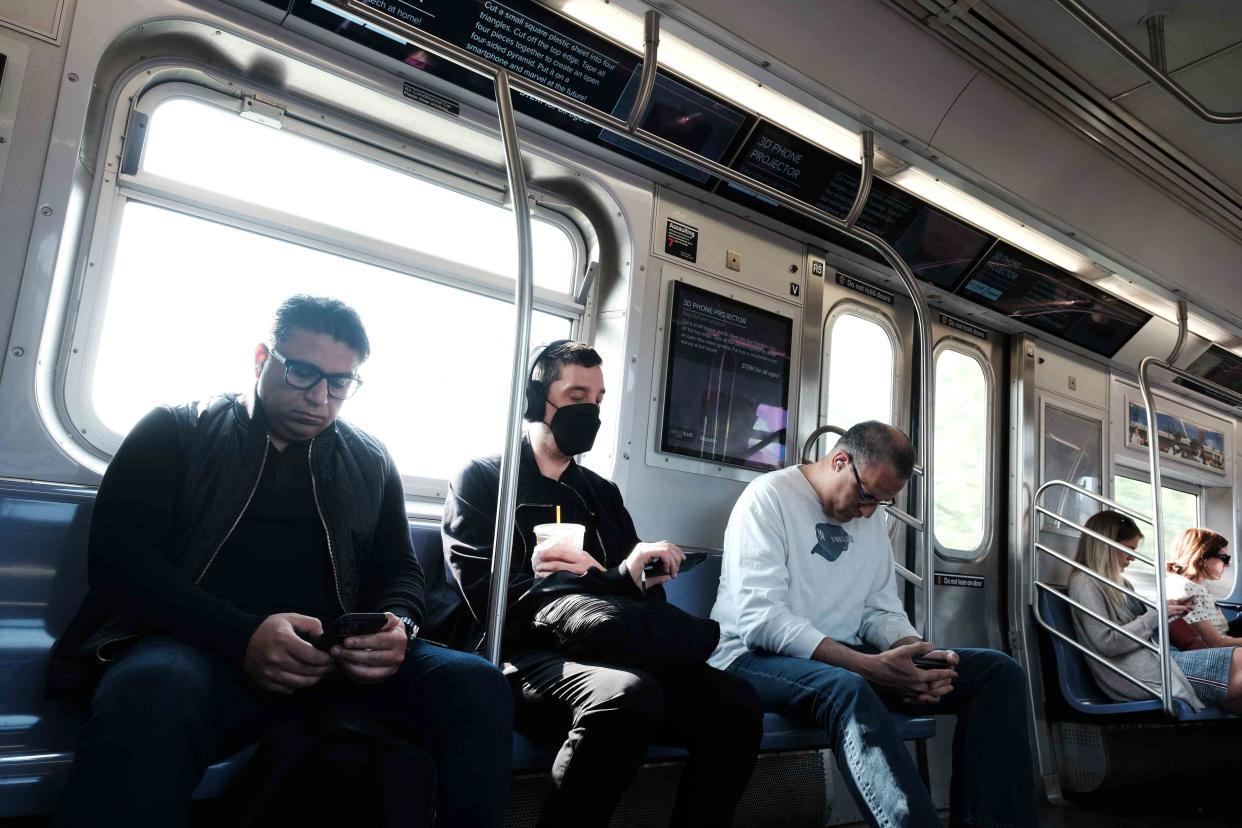3 Signs It's Time to Start Wearing a Mask Again

Spencer Platt / Getty Images
- Oops!Something went wrong.Please try again later.
Fact checked by Nick Blackmer
Key Takeways
The CDC and public health departments no longer track COVID infection rates, which can make gauging COVID risk difficult
If you're feeling unwell or have a positive influenza, COVID, or RSV result, stay home or mask if you must go out.
Wear a mask in indoor situations when around large groups or high-risk people.
Autumn is upon us, and with cooler temperatures comes the rise of a less popular season—respiratory virus season. COVID-19 continues to surprise epidemiologists and the latest variants such as EG.5 and BA.2.86 are spreading quickly, although with less severe effects than earlier strains.
That raises the question—if COVID is circulating alongside illnesses like cold, flu, and RSV, should people start masking up again? Experts say that at this point, masking is a personal decision based on your risk level, but there are indications that can help you determine that level.
Here are three ways to determine whether you should mask and which types of masks are the most effective against common respiratory viruses.
Are You Sick?
Most public health departments are no longer tracking COVID-19 infection rates, but the Centers for Disease Control (CDC) still monitors the number of hospitalizations due to COVID infection.
But Zachary Hoy, MD, pediatric infectious disease specialist at Pediatrix Medical Group, said that you don’t need to fixate on local hospitalization rates to determine whether or not to mask. While you can always mask if you’d like to as a preventive measure, the most important thing is to listen to your body.
“I would recommend wearing a mask if you are sick with COVID or have had a recent positive test for COVID and are going to be around other people,” Hoy told Verywell via email.
Since COVID, influenza, and RSV all have very similar symptoms, you might want to start wearing a mask as soon as you start feeling the sniffles, shortness of breath, wheezing, or coughing. Likewise, if you know that you’ll be around someone who is feeling unwell, a mask may prevent you from contracting their illness.
Related: COVID by the Numbers: Fall 2023
Are You or a Companion High-Risk?
Masking is often not a solo venture, and wearing one may be in the best interest of those you are around. If infection rates of RSV or influenza are trending up in your area, you might consider masking up to protect higher-risk individuals, said Doug Laher, RRT, a Texas-based registered respiratory therapist, and Chief Operating Officer of the American Association for Respiratory Care.
“Being young or old are not risk factors,” Laher told Verywell. “Old age is not a risk factor. But over time, the elderly are more likely to develop a lifetime of medical conditions that would place them in a high-risk category.”
Laher says that there are several medical conditions that would place someone in a high-risk category, including:
Immunocompromised
Obesity
Breathing conditions (e.g., asthma, COPD, bronchiectasis, interstitial lung disease, pulmonary hypertension, cystic fibrosis, tuberculosis)
Cancer
Renal failure
Cirrhosis of the liver
Diabetes
Heart disease
Pregnancy
Is Your Environment Enclosed?
Both Hoy and Laher agree that masking outdoors is unnecessary, although Laher said that a mask may help those with breathing issues in the event of poor air quality. If you are at a high risk of infection, you may feel more reassured by wearing a mask outside as well. Most healthy people do not need to do so.
However, viruses tend to spread much more quickly indoors, without the benefit of airflow to disperse virus particles. Wearing a mask inside at large gatherings such as concerts or airports can slow the spread of many respiratory illnesses.
Hoy said that a mask only slows the spread of viruses; particles can still land on the eyes and face, even with a mask on. If you’re truly concerned, avoid large crowds and stay home if you have a fever or symptoms.
Related: Do You Still Need to Isolate If You Have COVID?
What Kind of Masks Do You Need These Days?
Although N95 masks were once considered essential in the fight against COVID, Hoy and Laher said that surgical masks are sufficient in most situations. High-risk individuals who come into contact with COVID might feel more comfortable with an N95 mask.
Cloth masks only stop the largest of particles. Hoy said that they tend to hold more moisture and have a larger level of variability of protection, so a standard surgical mask is a better option.
Related: The 10 Best COVID-19 Face Masks to Mitigate Airborne Illness
What This Means For You
Masking is an effective way to slow viral transmission of a variety of illnesses. During the height of the pandemic, influenza rates were historically low, likely because of widespread masking mandates. But masking has become a personal decision to be made according to the situation and your risk level. If you’re healthy, outdoors, and not in contact with someone who is high-risk, a mask is probably unnecessary. If you feel sick and must be out in public, a mask may save those around you from a similar fate.
The information in this article is current as of the date listed, which means newer information may be available when you read this. For the most recent updates on COVID-19, visit our coronavirus news page.
Read the original article on Verywell Health.

